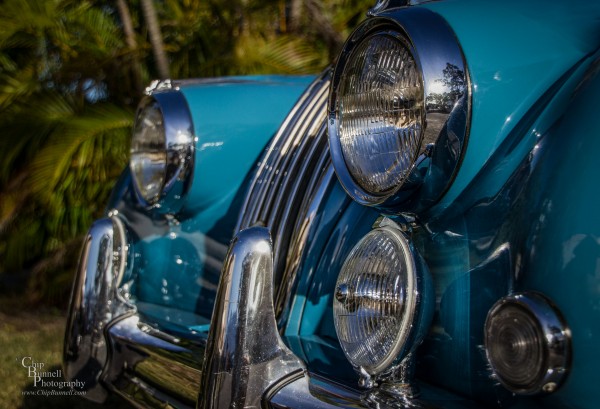Jaguar has long been a brand associated with luxury, style and performance. Innovative designs are wrapped in a body of long, flowing lines that allow you to longingly gaze upon them for hours. One of my South Florida favorite past times is visiting the numerous auto shows and auctions that come to town. I immediately and unconsciously find myself gravitating to the rows of open-top roadsters. The sun above and wind in what’s left of my hair complete the driving experience. While I have yet to pull out my checkbook and bring one of these magnificent machines to my garage, it is a joy to dream and admire in person what others only see on the pages of magazines. Of all the Jaguars produced, one of my favorites is the XK140.
Produced from 1954 – 1957, the XK140 was a significant improvement over the previous XK120. More power under the bonnet (hood for those of us on this side of the “pond”) meant its performance was just as good as its looks. A little more room leg room added to the comfort. The 1956 model introduced an optional automatic transmission, a first for Jaguar. One small, but important visual distinction between this and the previously similar model is an emblem on the “boot” (trunk) that said “Winner Le Mans 1951 – 3” to celebrate the historic victories.
While I believe the entire car is a work of art, there are many individual details that truly set it apart. In this image, I used a shallow depth of field to give the left headlight a visual punch and allow the rest of the car to fade into the palm trees lined background. In photography, the eyes are the focus and there is no exception with this stunning cat.
Single Frame, Processed in LR, PS and Topaz Clarity

